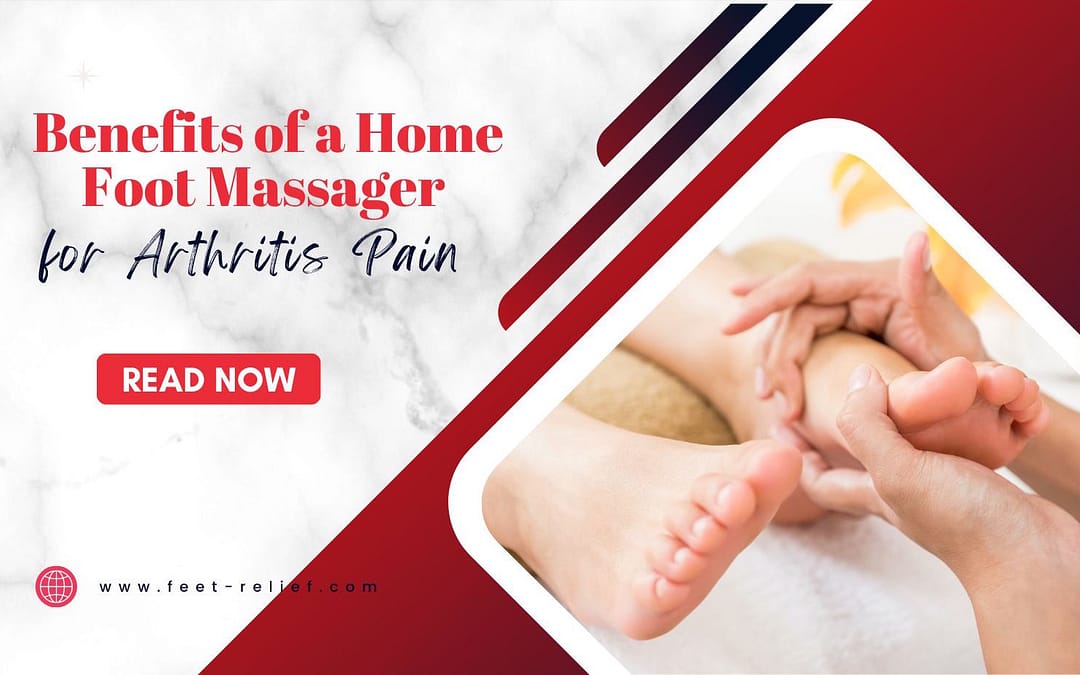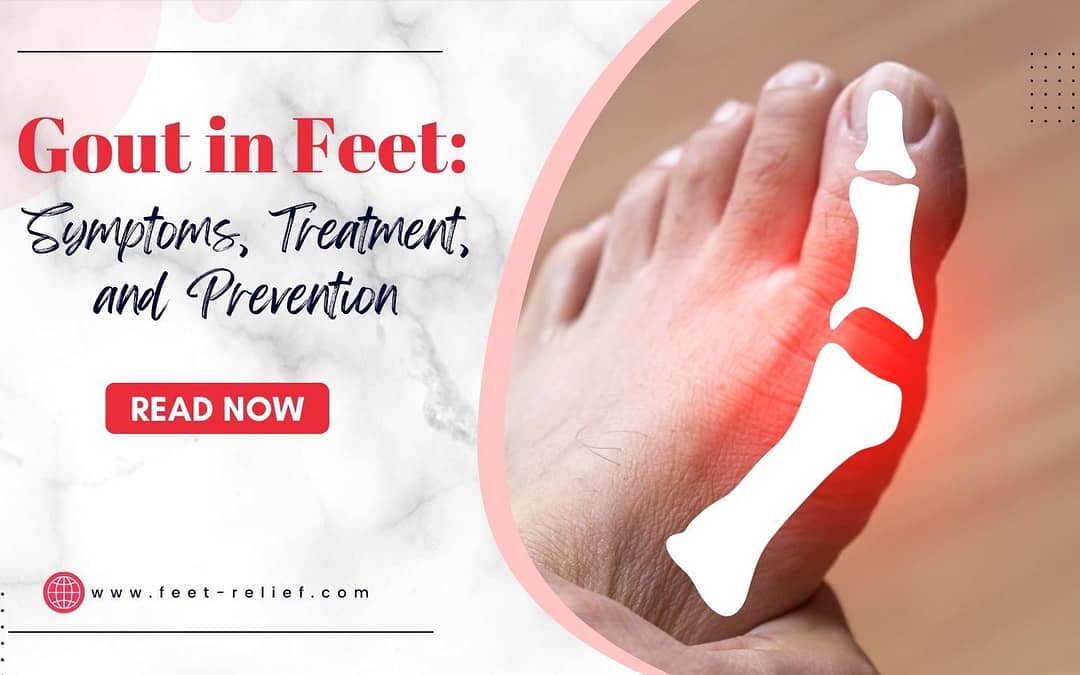
Manage Arthritis Pain in Your Feet
Manage Arthritis Pain in Your Feet: Tips and Techniques
Arthritis pain can significantly impact your daily life, especially when it affects your feet. With over 25 percent of the bones in your body residing in your feet, it’s no wonder that foot pain is a common symptom of arthritis. Whether you’re dealing with osteoarthritis, rheumatoid arthritis, psoriatic arthritis, or another type of arthritis, finding effective ways to manage arthritis pain in your feet is crucial. In this comprehensive guide, we’ll explore various tips and techniques recommended by podiatrists to help you alleviate and manage arthritis pain in your feet.

Understanding Arthritis and Its Impact on Feet
Arthritis is a condition that causes inflammation and stiffness in the joints, leading to pain and decreased mobility. While arthritis can affect any joint in the body, it is particularly common in the feet because of the 33 joints and 26 bones they contain. Osteoarthritis, the most prevalent type of arthritis, deteriorates the cartilage between the bones, resulting in bone-on-bone grinding and stiffness. Inflammatory types of arthritis, such as rheumatoid arthritis and psoriatic arthritis, target the connective tissues and cause inflammation in the joints, leading to pain and immobility.
Recognizing Symptoms and Seeking Medical Attention
One of the challenges of managing arthritis pain in the feet is recognizing the symptoms early on. Foot pain can serve as an important clue that you may have arthritis, prompting you to seek medical attention. It’s crucial not to dismiss any pain, swelling, stiffness, or inflammation in your feet. If you notice any discomfort or changes in your feet, it’s recommended to consult a podiatrist or rheumatologist for proper diagnosis and treatment. Early intervention can prevent long-term damage and improve your quality of life.
Podiatrist Tips for Managing Arthritis Pain in Your Feet
1. Pay Attention to Changes in Shoe Comfort
Arthritis can cause subtle changes in the shape and position of your toes, which may affect how your shoes fit. If you experience discomfort, pressure, or difficulty finding comfortable shoes, it’s time to consult a doctor. Rheumatoid arthritis, for example, can cause the toes to deviate outward. Properly fitting shoes are essential for managing arthritis pain and preventing further damage.
2. Be Mindful of Calluses on the Big Toe
The big toe is often the first joint to show symptoms of arthritis. Limited motion in the big toe, known as hallux limitus, can cause a “pinch” callus on the inside of the toe. If you notice this callus or experience pain and stiffness in your big toe, it’s essential to address it promptly to prevent further complications.
3. Recognize Abnormal Toe Swelling
Swollen toes, resembling sausage-like appearance, may indicate dactylitis, a common symptom of psoriatic arthritis. If your toes become excessively swollen, it’s important to consult a healthcare professional for proper evaluation and treatment.
4. Don’t Ignore Heel Pain
Arthritis can affect not only the toe joints but also the ankle and heel. Many people mistake heel pain caused by arthritis for a sports injury or strain. However, if the pain persists or recurs frequently, it’s crucial to seek medical attention. Inflammatory types of arthritis, such as psoriatic arthritis and ankylosing spondylitis, can cause enthesitis, inflammation where ligaments and tendons insert into bones. The Achilles tendon in the heel is a common location for enthesitis.
Hammertoes, characterized by toes bending downward at the joint, can be a symptom of arthritis. It’s important to treat hammertoes early to prevent further complications and the development of osteoarthritis. Consulting a podiatrist for proper evaluation and treatment is recommended.
5. Address Hammertoes Early
Hammertoes, characterized by toes bending downward at the joint, can be a symptom of arthritis. It’s important to treat hammertoes early to prevent further complications and the development of osteoarthritis. Consulting a podiatrist for proper evaluation and treatment is recommended.
6. Be Aware of Gout Symptoms
Gout, a type of arthritis caused by the buildup of uric acid crystals, often affects the joint of the big toe. Recognizing symptoms such as pain, swelling, redness, and tenderness in the base of the big toe joint is crucial. Consulting a primary care doctor or rheumatologist for proper diagnosis and treatment is essential, especially if the symptoms persist or worsen.

Seeking the Right Healthcare Professionals
7. The Role of Podiatrists and Rheumatologists
Podiatrists can effectively treat various foot pain conditions, including arthritis. However, if your doctor suspects an inflammatory arthritic condition, such as rheumatoid or psoriatic arthritis, it’s important to consult a rheumatologist in addition to your podiatrist. Rheumatologists specialize in the treatment of underlying arthritic conditions, reducing the risk of permanent damage to your feet.
8. Don’t Hesitate to Ask Questions
Foot pain can be a symptom of various underlying diseases, including cancer, diabetes, and multiple sclerosis. Podiatrists are aware of this and may suggest additional tests or referrals to other healthcare providers. If you feel that there may be more to your symptoms, don’t hesitate to ask about further tests or seek a second opinion.
9. Steroid Use and Caution
Corticosteroid injections can provide temporary relief by reducing inflammation and pain. However, it’s important not to overuse them, as frequent injections in the same area can weaken bones, ligaments, and tendons. Injectable steroids should not be used for enthesitis, as they can potentially rupture the tendon or ligament completely.
10. The Importance of X-rays

When visiting a doctor for foot pain, diagnostic scans, such as X-rays, should not be skipped. X-rays can reveal joint space narrowing, the presence of bone spurs, and other bony formations associated with arthritis. These images aid in proper diagnosis and guide treatment decisions.
Exercise and Physical Therapy for Arthritis Foot Pain
11. Choosing the Right Exercise Surfaces
To minimize wear and tear on your joints, it’s recommended to exercise on softer surfaces rather than concrete or cement. Opt for rubberized or cushioned gym floors, carpet indoors, or grass, dirt, or turf outdoors. Even asphalt is gentler on the joints compared to concrete sidewalks.
12. Incorporate Daily Stretches
Gentle stretches can help alleviate foot pain caused by tight tendons and muscles. Target areas such as the hamstrings, calves, foot arch, and heel to promote flexibility and reduce discomfort. Consult a physical therapist to learn which stretches are suitable for your specific condition.
13. Focus on Toe Exercises
Exercising your toes regularly can help reduce pain and increase their range of motion. Simple exercises like picking up a washcloth with your toes, pointing and flexing your feet, and walking barefoot on sand can strengthen and stretch the toe muscles, promoting better foot health.
14. Opt for Low-Impact Exercises
To protect your joints, particularly if you already have osteoarthritis, choose low-impact exercises over high-impact ones. Walking instead of running and using an elliptical machine instead of engaging in high-impact aerobics can significantly reduce stress on your joints. Swimming is an excellent choice for people with arthritis, as it provides a full-body workout while minimizing joint impact.
15. Embrace Yoga and Pilates
Yoga and Pilates are excellent exercises for individuals with arthritis, as they promote flexibility, joint mobility, and pain relief. These full-body workouts, although not specifically targeting the feet and toes, can effectively work these areas due to the balance and stability required during various poses. Restorative yoga exercises can be particularly beneficial for individuals with arthritis.
Choosing the Right Footwear for Arthritis
16. Invest in Quality Shoes
When dealing with arthritis pain in your feet, it’s important to avoid inexpensive shoes with thin soles. Look for shoes with a nice, thick, cushioned sole, such as those found in higher-end athletic shoes. Proper footwear can significantly reduce foot pain and provide necessary support. We recommend Orthofeet.
17. Avoid Going Barefoot
While the barefoot or minimalist shoe movement may be popular, it’s advisable for individuals with arthritis to wear shoes most of the time, even indoors. Opt for easy slip-on shoes or clogs that offer support and protection to your feet.
18. Consider Adjusting Shoe Size
As your feet change over time, it’s essential to adjust your shoe size accordingly. Ill-fitting shoes can exacerbate foot problems and worsen arthritis symptoms. Buying shoes in a larger size and wider width can alleviate pressure on sore spots and provide a more comfortable fit.
19. Replace Worn-Out Shoes Regularly
Shoes, especially those with cushioned or orthotic soles, have a limited lifespan. Using worn-out shoes can lead to inadequate support and increased pressure on your feet. Even if your shoes don’t appear worn out, it’s advisable to replace them regularly, especially if you’re active. Additionally, avoid wearing the same pair of shoes for consecutive days to give your feet a break and prevent excessive wear.
20. Say No to High Heels
High heels can worsen arthritis symptoms in the toes and feet while increasing the risk of bunions and hammertoes. It’s best to avoid wearing high heels altogether to prevent unnecessary pain and complications.
21. Choose Supportive Flats
Flats can be an attractive alternative to high heels, but not all flats provide adequate support. Many flat shoes leave your feet unsupported and in an unnatural position, increasing the risk of foot problems. Opt for wide, comfortable flats with proper arch support and a small heel lift to ensure foot health and comfort.

Taking Care of Your Feet
22. Weight Management and Foot Health
Maintaining a healthy weight is crucial for foot health, as excess weight puts additional stress on the joints and connective tissues. Even losing a small amount of weight can significantly ease the burden on your feet and improve arthritis symptoms.
23. Toe Caps for Pain Relief
Toe caps made of gel or compression fabric can provide pain relief and support for arthritic toes. While they won’t cure the condition, they can reduce discomfort and prevent calluses from rubbing or worsening.
24. The Power of RICE
For dactylitis and enthesitis, the classic RICE treatment can help alleviate symptoms. Rest, ice, compression, and elevation effectively reduce inflammation and manage arthritis pain. Non-steroidal anti-inflammatory drugs (NSAIDs) can also provide relief, but if symptoms persist or worsen, it’s advisable to consult a healthcare professional for further evaluation and treatment options.
25. Early Intervention for Bunions
Bunions, a common symptom of arthritis, can lead to stress on the joint and the development of osteoarthritis if left untreated. It’s essential to address bunions early, before they become painful. While conservative treatments can be effective in the early stages, surgical intervention may be necessary if the deformity progresses.
26. The Benefits of Arch Supports
Arch supports, placed inside your shoes, can provide relief and support for painful or arthritic joints. There are various types of arch supports available, and starting with a quality over-the-counter insert is often sufficient. If needed, consult a podiatrist for custom orthotics tailored to your specific needs.
27. Custom Inserts for Enhanced Support
Custom orthotics can significantly improve foot comfort and support, particularly for individuals with arthritis. These inserts can protect and support painful joints, prevent worsening of bunions, and reduce pressure on calluses. Consult a podiatrist for the appropriate type of custom insert for your specific symptoms.
28. Crest Pads for Hammertoes
Crest pads, which fit underneath your toes and secure them in a normal position, can help stabilize joints and reduce toe pain caused by hammertoes. These silicone pads can be worn alone or inside your shoes for added comfort and support.
29. Epsom Salt Baths for Pain Relief
Soaking your feet in Epsom salt baths can provide soothing relief for arthritis pain. The warm water helps reduce pain and swelling, while the magnesium in the salt relaxes your muscles. Consider incorporating regular Epsom salt foot baths into your self-care routine.
Manage arthritis pain
Managing arthritis pain in your feet requires a multi-faceted approach that encompasses proper footwear, exercise, medical attention, and self-care techniques. By being proactive and following the tips and techniques recommended by podiatrists, you can effectively alleviate and manage arthritis pain in your feet, improving your overall quality of life. Remember to consult healthcare professionals for personalized advice and treatment options tailored to your specific needs.
Additional Information



















